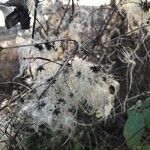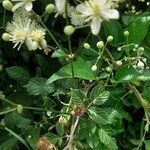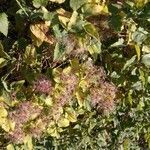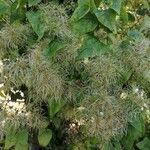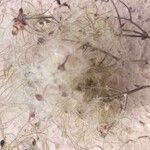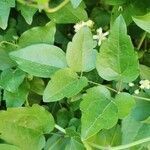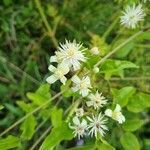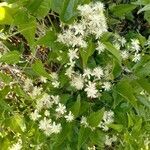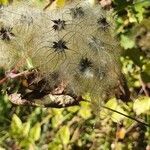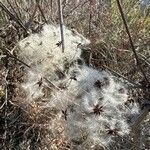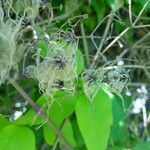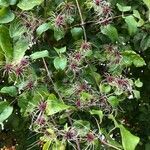Stems climbing with tendril-like petioles and leaf-rachises, to 12 m. Leaf blade pinnately 5-foliolate; leaflets cordiform, 8 × (2-)3-5(-6) cm, margins entire to regularly crenate or dentate; surfaces abaxially minutely pubescent on veins, adaxially glabrous. Inflorescences axillary and terminal, (3-)5-22-flowered cymes. Flowers bisexual; pedicel 1-1.5 cm, slender; sepals wide-spreading, not recurved, white to cream, elliptic or oblanceolate to obovate, ca. 1 cm, length ca. 2 times width, abaxially and adaxially tomentose; stamens ca. 50; filaments glabrous; staminodes absent; pistils 20 or more. Achenes nearly terete, not conspicuously rimmed, densely pubescent; beak ca. 3.5 cm.
A woody climber. It is like fragrant clematis (Clematis flammula) but more robust. It grows to 30 m long. The leaves are once divided. The leaflets often have teeth. The flowers are greenish-white. The petals are hairy on both surfaces. The fruit are dry and one seeded. They are covered by poufs of white hairs.
Pending.
